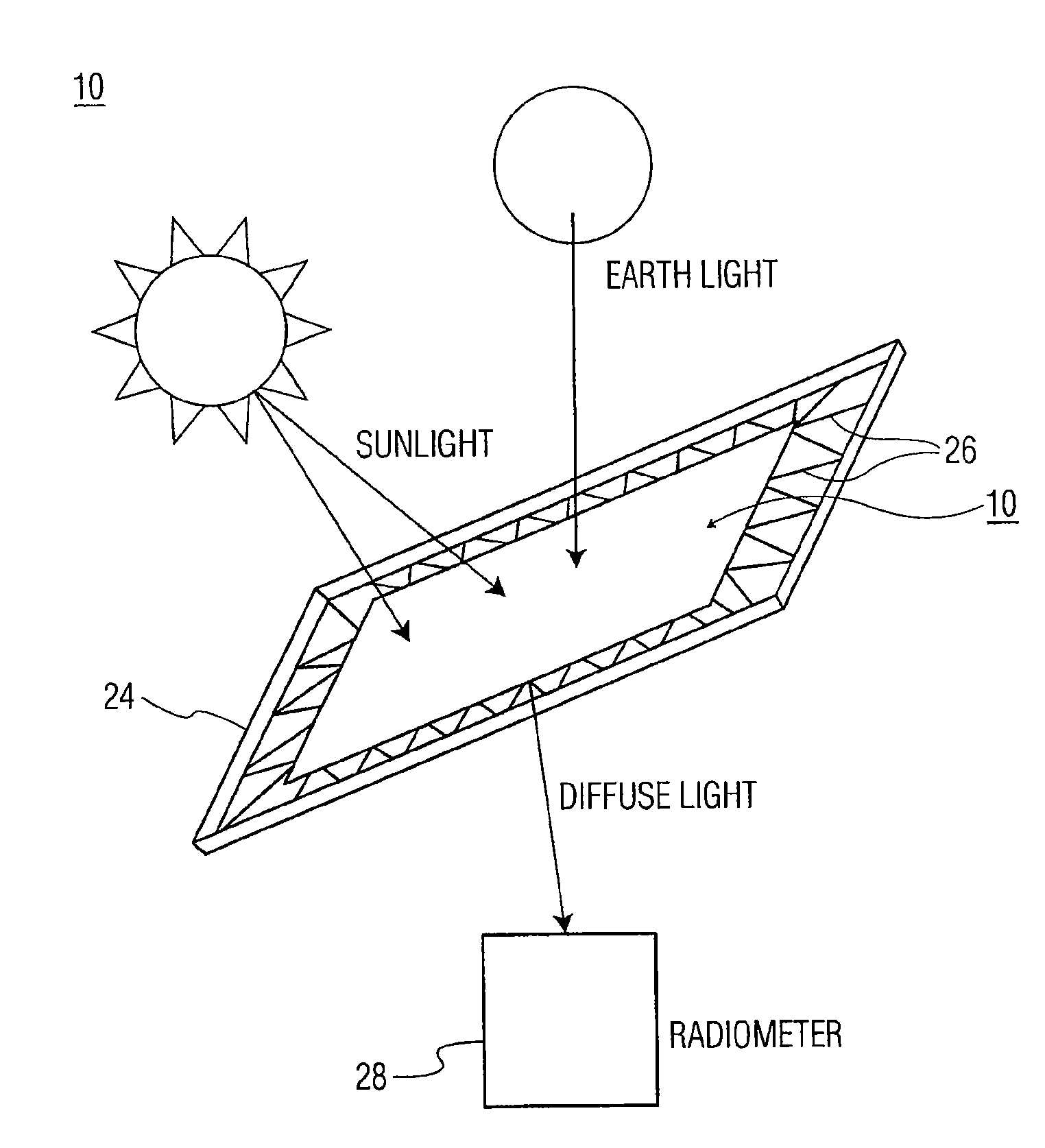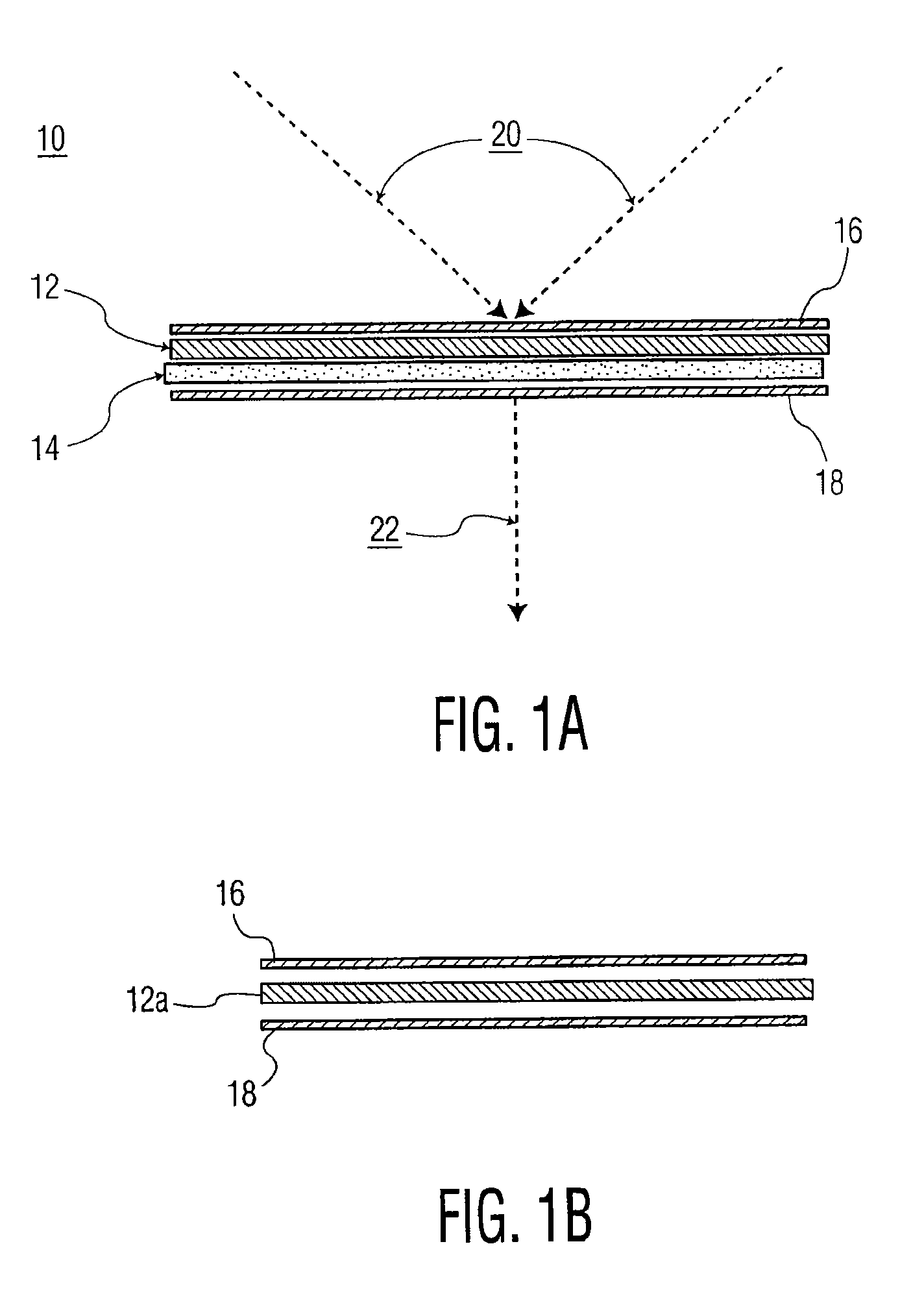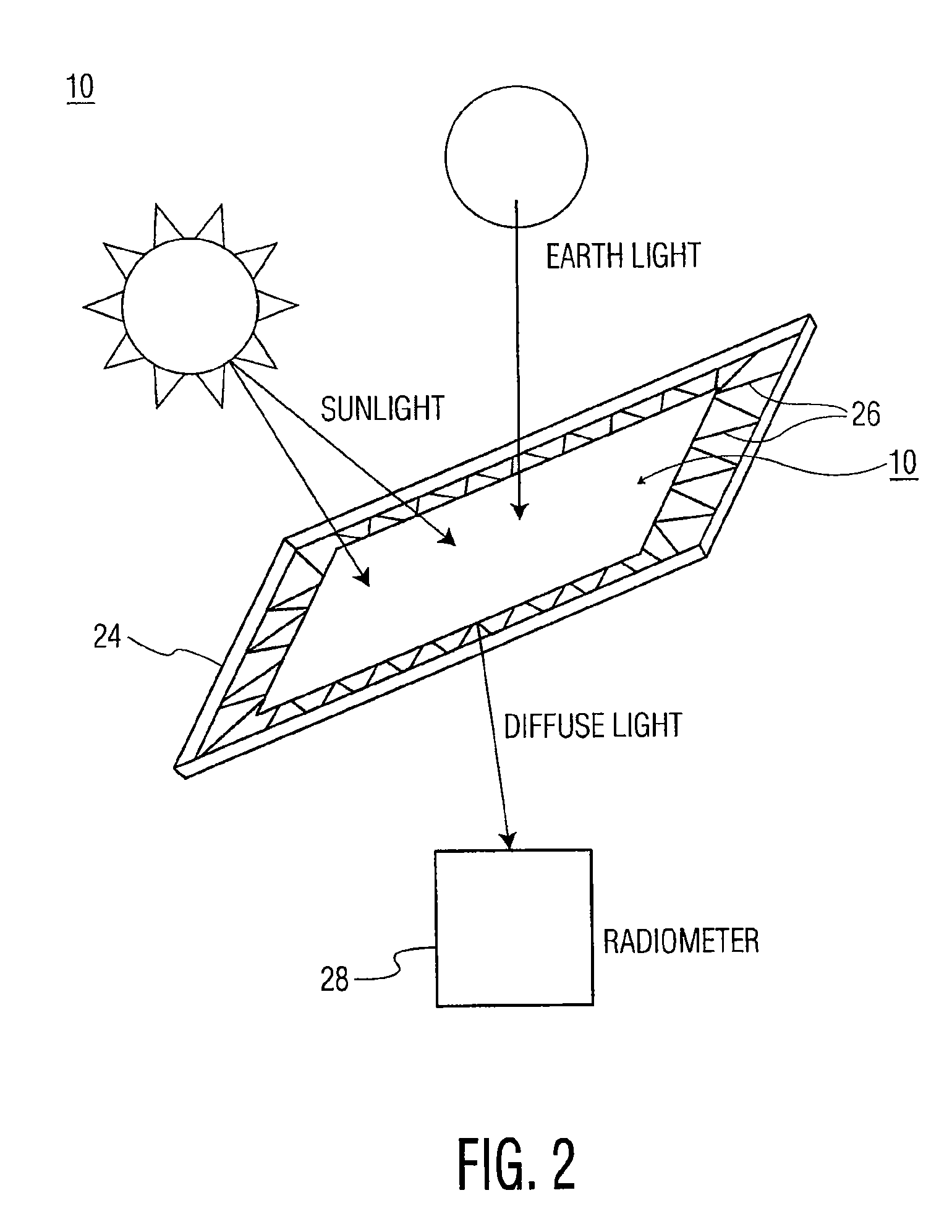Transmissive diffuser with a layer of polytetrafluoroethylene on the output surface for use with an on-orbit radiometric calibration
a polytetrafluoroethylene and diffuser technology, applied in the field of radiometry, can solve the problems of difficult characterization of reflective diffusers, affecting the measurement accuracy of remote sensors, and changing the spectral reflectance characteristics of diffusive reflectors or diffuser panels,
- Summary
- Abstract
- Description
- Claims
- Application Information
AI Technical Summary
Problems solved by technology
Method used
Image
Examples
Embodiment Construction
[0030]The present invention provides a unique transmissive diffuser for on-orbit radiometric calibration. In general, a transmissive diffuser may use solar angles that are unavailable to a reflective diffuser. A transmissive diffuser, furthermore, may be made from lightweight, low outgassing, none brittle, radiation stable material that lowers risk of device failure prior to satellite launch and after satellite launch. Moreover, the materials used for the transmissive diffuser includes material already approved for the space environment.
[0031]Referring first to FIG. 1A, there is shown a transmissive diffuser, generally designated as 10. As shown, the transmissive diffuser of the present invention includes a thin fiberglass cloth, generally designated as 12. In the exemplary embodiment shown in FIG. 1A, fiberglass cloth 12 is sandwiched between a first layer of mylar, generally designated as 16, and a thin layer of PTFE / Spectralon™ material, generally designated as 14. Also shown is ...
PUM
 Login to View More
Login to View More Abstract
Description
Claims
Application Information
 Login to View More
Login to View More - R&D
- Intellectual Property
- Life Sciences
- Materials
- Tech Scout
- Unparalleled Data Quality
- Higher Quality Content
- 60% Fewer Hallucinations
Browse by: Latest US Patents, China's latest patents, Technical Efficacy Thesaurus, Application Domain, Technology Topic, Popular Technical Reports.
© 2025 PatSnap. All rights reserved.Legal|Privacy policy|Modern Slavery Act Transparency Statement|Sitemap|About US| Contact US: help@patsnap.com



